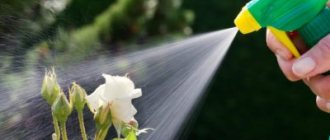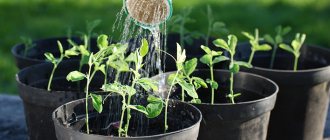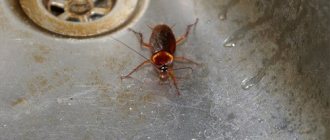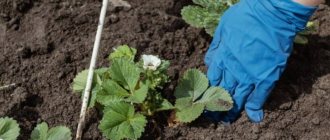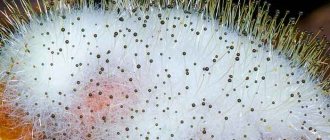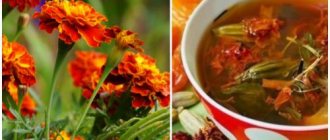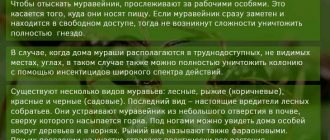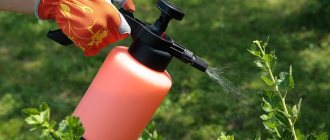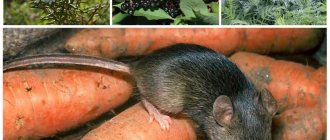Wood or grass ash is one of the most affordable means for fertilizing vegetables and flowers, fighting diseases and harmful insects. It contains elements such as potassium, phosphorus, calcium, about a hundred items in total. There is only no nitrogen in the powder. Nutrients are contained in the product in a form accessible to plants. Ash deoxidizes the soil, making its structure looser.
Ash is added to the soil in dry form during digging. An ash infusion is prepared to feed plants during the growing season and control pests.
Advice. Ash should be stored in tightly sealed plastic bags in a dry and dark place.
Only ash from burning coniferous and deciduous wood, grass, straw, and plant residues is suitable for the garden. It is prohibited to use ashes from polyethylene, newspapers, plastic, or painted wood!
As a top dressing, the most valuable is the ash from birch, apple, pear and meadow grass.
What and why to pour ash infusion
Water extracts from plant ash are a very useful remedy for the garden. Strained infusion of ash is an effective root and foliar feeding of all cultivated plants, rich in phosphorus and potassium salts, which are in a form bioavailable to the root system and above-ground parts of seedlings, as well as a whole complex of microelements.
Ash infusion should be used to enrich the following crops with nutrients: the nightshade family (potatoes, tomatoes, peppers, eggplant); pumpkin (cucumbers, zucchini, pumpkin); onion; cruciferous vegetables (cabbage, radish, radish); legumes (peas, beans, beans); greens (dill, parsley).
Ash is not suitable for crops that love acidic soil: rhododendron, azalea, hydrangea, conifers, sorrel.
You cannot combine fertilizing with ash (phosphorus and potassium predominate) and nitrogen fertilizers, as these substances neutralize each other. At least 20 days should pass between feedings.
And with the help of an ash solution, you can get rid of numerous pests of the garden and vegetable garden: aphids, spider mites, copperheads, cruciferous flea beetles, mollusks, flies, etc. Plants are sprayed with an ash extract with the addition of laundry soap, which improves the adhesion of the insecticide, from early spring to late autumn to prevent the appearance and destruction of the parasite population.
Precautionary measures
During processing, you should wear a respirator and gloves. After finishing work, you should wash your hands with soap. Contact of the product with mucous membranes is unacceptable. Tabazol can cause allergies in the form of redness, rashes on the body, and eye irritation.
The drug Tabazol - an insecticide and fertilizer - is available to anyone, its price can range from 40 to 120 rubles per kilogram package. A mixture of ash and tobacco is valued as a repellent to harmful insects and as an excellent fertilizer. Vredstop magazine recommends the widespread use of Tabazol, because the undeniable advantage of this product is its double action, natural base and quite reasonable price. The use of this mixture can be combined with agrotechnical and mechanical biological methods for plant protection.
Gardeners share their experience of using Tabazol, for example in this video review:
Preparing the mother liquor
For ease of use, experienced summer residents first prepare a mother infusion. How to infuse ash:
- 2 liter jars of sifted ash are poured into a bucket and the powder is poured with 8 liters of clean lukewarm water.
- How long to infuse the ash? – 2-3 days, periodically stirring with a wooden stick, then pour into another container, leaving the sediment in the bucket. It can be added to the compost bin.
An ash solution is prepared even faster by stirring 1 cup of ash in 8 liters of lukewarm water. The concentration of useful substances in such a solution will be several times lower.
Tomato tops
Another cultivated plant containing phytoncides and insecticides is tomato tops.
It can be used alone or in combination with other herbal infusions. for example, with infusion of celandine or garlic. The result of spraying affected plants with a decoction of tomato tops will be immediate and very long-lasting.
Like any other spraying agent, the decoction is not recommended for use in rainy weather or for watering sprayed plants for 2-3 days after the procedure.
To prepare, you will need tops dried in the shade, which are chopped, placed in a bucket and filled with water. Boil for about half an hour. The concentrated decoction must be diluted with water in a ratio of 1:5. For every 10 liters of water add 40 g of soap.
Concentration of ash infusion for fertilizing and against pests
| Recommended fertilizing concentrations: | |
| for root feeding of leafy greens, vegetables, flowers, trees, indoor plants and shrubs | the concentrate is diluted with water 1:5 |
| for processing plantings using tops and leaves | The mother solution is diluted 1:10 |
Plants are watered with ash infusion at intervals of 12-14 days throughout the summer season.
Irrigation of the above-ground parts of plants infested with parasites is carried out using a spray bottle. Ash-soap infusion against pests is used after dilution 1:4 and dissolving 50 g of laundry, tar or sulfur soap in it for every 10 liters of biological insecticide. The frequency of treatments is from 3 to 6 times with an interval of several days, depending on the reaction of dangerous insects to spraying.
Ash effectively repels aphids, cabbage moths, cruciferous flea beetles, and codling moths. Use sifted ash powder, generously dusting the leaves with it.
From aphids
An infusion of wood ash is used against aphids:
- Pour 300 g of ash into a liter of boiling water.
- Keep in a water bath for 20 minutes.
- Cool, strain and bring the volume to 10 liters.
- Add 1 tbsp to a bucket of solution. a spoonful of liquid soap for better adhesion of the composition to the leaves.
Video recommendations for using aphid ash:
;
To repel slugs and snails, sprinkle the soil around the plants with a mixture of wood ash and lime.
Destruction of aphids at home
For effective control, there is a large arsenal of chemicals and many traditional methods of controlling aphids. Modern insecticides have a wide spectrum of action and kill adults, eggs and some other harmful insects. The method of their application is identical and consists of spraying the plants. The best pesticides are:
- "Aktara"
- "Tanrek"
- "Spark"
- "Fitovrem"
Physical measures against aphids should be used in conjunction with chemical ones, otherwise they will have to be repeated several times. Mechanical control methods in the form of poisoned baits and various traps are ineffective due to the feeding method and food supply of these insects. However, you can defeat them with:
- a powerful jet of water that will wash away pests from plants;
- hands, removing individuals from bushes and trees.
Biological methods boil down to attracting birds and other insects that eat aphids (for example, ladybugs) to the site, as well as the correct planting of plants that have repellent properties. So, it is better to plant tomatoes and beans surrounded by onions and garlic. In addition, you can use organic insecticides isolated from herbs and flowers - Actofit, Akarin.
Recipes for using ash solution
There are different concentrations of solution or infusion of ash for use in various situations: feeding vegetables, flowers, treating pests.
| Rules of application | |
| For seeds | It is useful to soak seeds collected with your own hands and unprocessed store-bought ones before sowing in an ash infusion to saturate them with microelements. 1 tbsp. A level spoonful of ash is stirred in a glass of warm water and left for a day. The seeds are placed in a gauze bag, which is lowered into a glass with infusion for 6 hours. There is no need to rinse the seeds in clean water before sowing. |
| For seedlings | It is useful to water seedlings of vegetable crops with ash infusion (1 glass per bucket of water), replacing them with mineral phosphorus-potassium fertilizer. Cabbage seedlings, thickly dusted with ash powder immediately after planting, will not become a victim of cruciferous flea beetle attack. |
| For strawberries | In the second year of life, it is useful to feed garden strawberry bushes with ash. It is not necessary to prepare a solution; just scatter the ashes around the bushes. Use 2 cups per 1 square meter. m of soil area. This feeding will be effective in the second half of summer. Dusting berries with fine ash helps protect strawberries from gray rot. |
| For roses | Using ash as a fertilizer helps roses:
Ash helps rose bushes not lack boron, an element important for the plant. When planting a rose bush in the spring, add about a glass of dry ash to the soil hole. For feeding, use a solution in a concentration of 1 glass per bucket of water, spending 0.5 liters per bush. Apply fertilizer in the second half of summer 2-3 times during the growing season. The same solution can be used as foliar feeding on rose foliage, using half as much ash. |
| For indoor flowers | When planting and replanting plants, add 1 tbsp for each liter of soil. spoon of ash. It is useful for geraniums, fuchsias, cyclamen and other plants that do not like acidic soils. As a phosphorus-potassium fertilizer, use an infusion of 1 liter of water and half a glass of ash. The solution is kept for up to 5 days in a dark place, then the flowers are watered with it. |
Top dressing from nettles and ash
Fresh nettle is often used to make “green manure”. This infusion of fresh nettle grass and other weeds (shepherd's purse, tansy) is prepared for 5-7 days, adding the Baikal preparation or a little yeast (fresh bread or crackers) to speed up fermentation.
To increase the effect of fertilizing, add ash to the container with grass, about 200 g per 15 liters.
Before use, the finished infusion is diluted 7 times with clean water. It is used to feed all vegetable crops, except garlic, onions, and legumes.
Tobacco dust
A separate topic for discussion is the flowering period of plants. At this time, safety comes to the fore, and the use of chemicals can cause irreparable damage to the future harvest. What to do in such cases?
Here tobacco dust will come to your aid, as it has a detrimental effect on almost all types of garden pests, without causing any harm to the plants themselves. It has an impact almost the first time. The only negative is that in case of mass reproduction of aphids, it only helps in combination with other means.
ATTENTION! Tobacco dust should never be combined with chemical and organic preparations!
Used in two versions. The first is a decoction. The recipe, compared to other products, is quite complex and requires strict adherence at all stages. Tobacco dust is poured with water at the rate of 1 to 10. Then the solution is boiled for 30 minutes. Don't forget to add water. Infuses for 24 hours. Afterwards, the decoction is filtered and diluted with water in a ratio of 1 to 3. 40 grams of soap are added to the finished decoction.
The second option is infusion. Here, in general, everything is the same. But instead of boiling, tobacco dust is infused in water for about two days. The concentrate must be diluted with water in a ratio of 1 to 3 and then soap must be added to it.
BESIDES! Infusions of various herbs, flowers or fruits work well to destroy aphids! Keep this in mind before throwing them away!
There are a huge number of variations. Here are the most popular:
- Chamomile infusion. 100 grams of inflorescences and herbs are infused for 12 hours in 1 liter of water. Another option is possible. A quarter kilogram of Caucasian chamomile should be crushed into pollen, then poured with water and immediately sprayed.
- Dandelion infusion. Leaves (400 g) and roots (200 g) are used. You need to insist for 3 hours. Water volume – 10 liters.
- Marigold infusion. Leave for two days. The amount of water is 10 liters. Add 30-40 grams of soap (any type) to the finished infusion.
- Infusion of horse sorrel roots. 400 g is poured with hot water and filled with hot water. Infuses for 3 hours.
- Infusion from pine needles. Quite a long time to prepare, but at the same time very effective. A kilogram of pine needles needs to be infused for a week in 4 liters of water. The infusion should be stirred once a day.
- Infusion of citrus peels. Infuse 100 grams of peels of any citrus fruit for three days and you will get rid of aphids.
Mechanical method
The mechanical method of fighting involves the use of one’s own strength, as well as the use of water procedures. If the infestation is minor, you can pick up the pests with your hands, but be sure to use rubber gloves.
If there are affected leaves, you need to get rid of them. If you cannot collect all the bugs, you can get rid of them with water. To do this, use running water, cover the soil, and carry out the procedure daily.
The use of laundry soap and water procedures shows good results. To do this, you need to prepare a soap solution, mix laundry soap and water in a ratio of 1:6.
It is better to grate the soap so that it dissolves easily in water. This solution must be wiped over all parts of the plant, leaves, stems, buds. It is better to cover the soil with oilcloth so that the substance does not penetrate to the roots
It is better to apply with a cotton pad, paying maximum attention to hard-to-reach places
After treating with a soapy solution, rinse the plant under running water. This procedure is carried out daily until the pests completely disappear. To treat leaf plates, you can use medical alcohol, which will be safe for leaves, but at the same time destructive for pests.
Ash for protection against insect pests
To eliminate parasites from the site, some gardeners use chemicals. The effectiveness of such products has been proven, but there is also a risk that the chemical compounds will spread to the fruit.
A safe and equally effective way to control pests is to use ash.
- To kill snails and slugs, dust the soil with dry ash powder. It will be difficult for pests to move on the ash surface, so they will quickly leave the territory of the summer cottage.
- Dusting is also used against wireworms; a layer of ash is sprinkled on the pest's paths.
- To protect strawberry bushes from larvae, dust the edges of the holes when sowing seedlings.
- To protect the upper parts of crops from attack by insects such as aphids and whiteweed, it is useful to periodically spray the plants with ash infusion.
- To protect agricultural crops (onions, cabbage, rutabaga and radishes) from cruciferous flea beetles and flies, an infusion of a mixture of ash and tobacco is used.
Processing Features
The above solutions are suitable for treating a wide variety of plants, including trees, flowers, and small shrubs. However, it is worth considering that although soap is an effective means of combating aphids and other pests, in advanced situations, when the parasites have already managed to fully proliferate, it will be ineffective, and therefore you will have to resort to the use of other, more radical and effective means.
The plant should be treated only in the evening or in cloudy weather so that it does not get burned or get sick. Please keep in mind that if it rains after treatment, the spraying will have to be repeated, since the product will not be able to affect the parasites and will quickly be washed off with water.
An equally important criterion for processing plants is its thoroughness. When spraying, do not rush, spend time not only on the upper side of the leaf plate, but also on the lower side, since this is where the main accumulation of aphids is observed. If you don’t take the time to process the back of the sheet, you shouldn’t expect much effect.
In addition, before processing it is worth removing anthills from the area. Ants are on friendly terms with aphids, as they feed on its sweet juice, which it secretes during its life. It is they who often bring the parasite to the site.
This option will not spoil the beauty of the rose
Unfortunately, this simple method of combating aphids cannot be afforded by amateur gardeners. Delicate flowers disfigured by a solution with ash will not be able to restore their beauty after such treatment. For them I have another, even simpler method. He helps me save roses, double mock orange and many other plants.
I take my wonderfully lightweight plastic basin, fill it with warm water and dissolve a small amount of dishwashing detergent in it. I foam the water and apply the foam with a sponge to the surface of the half-opened buds. I wash the stems and tight buds affected by aphids with a liquid solution using a sponge.
The foam on the roses is not visible for long, then it falls off and dries out along with the remaining aphids. Light white foam that gets on the blossoming flowers does not spoil them at all. I do not rinse my roses with clean water, because in all this time I have not noticed that they suffer from such treatment. Problems with aphids do not arise for quite a long time. Of course, I do not carry out this work either in rainy weather or at midday on a clear day, as sunburn may appear on the leaves. This simple method helps to successfully fight aphids even on vegetable crops.
Among concentrated dishwashing liquids there are more or less effective (for fighting aphids) products. I have been using Fairy “Wild Berries” for a long time. The aphids did not like some kind of fragrance or other element in the composition of this liquid. Unfortunately, lately I haven’t seen “Wild Berries” on sale. But there are other products that I plan to try after my supply finally runs out.
How can it be used?
Ash treatment allows you to quickly get rid of aphids on a variety of plants. The substance can be powdered on the leaves. If you first wet the plant with soapy water, the product will stick for a long time. Also, ash is often poured between rows and holes.
If you prepare a solution, the processing will be even easier. So, bushes, trees, and various crops are watered or sprayed with liquid. There are some nuances of use.
Before watering, it is important to loosen the soil around the tree. After this, the tincture is poured
For preventive purposes, watering is carried out in the spring, immediately after the snow has completely melted. The leaves will bloom bitter and the aphids will not eat them. Hot water is used to water trees. If you need to treat the soil under flowers and vegetables, use a liquid at room temperature. Spraying is carried out only in dry weather when there is no wind. You can carry out the procedure early in the morning or in the evening, when the sun is no longer shining. Aphids live on the back of leaves and stems. It is these areas that need to be treated with special care. It is better to pour more solution than less. An excess of ash does not harm, but a deficiency may simply not give the desired effect.
Ash has been used against aphids for many decades. All recipes have long been tested in practice. At the same time, the product also drives away ants. But it is they who often provoke the spread of aphids from diseased plants to healthy ones.
Kinds
To obtain ash, it is enough to burn dried grass, straw, twigs or leaves of various trees (deciduous or coniferous). Many gardeners use ash even with coal particles.
Agricultural crops and indoor flowers cannot be fed with red-colored ash, because it contains an excessive amount of iron, which is harmful to plant crops. Ashes obtained after burning dyes, household waste, newspapers, and plastic film cannot be used under the guise of a nutritional composition. Such ash contains harmful components that not only pollute the soil, but also pass into the fruits and structure of plants.
Depending on the raw materials burned, the composition of the ash may vary. The most valuable nutritional supplement in terms of potassium and phosphorus content is the ashes obtained after burning fern leaves or sunflower stems. The leader in calcium content is the ash of pine and birch trees. The ash with the poorest nutritional value is obtained after burning peat.
Preventive measures
It is impossible to get rid of aphids once and for all. However, its occurrence can be prevented through prevention. The best time for this is spring, but it can also be done in summer. Below are tips to help reduce the risk of aphids on your plants.
- It is necessary to systematically check the presence of an anthill on the site. If it is found, it is poured with boiling water. This measure will reduce the likelihood of aphids appearing.
- In the fall, remove all damaged and insect-infested branches.
- Planting calendula in your garden will attract more ladybugs, which are the best aphid killers.
- Potassium permanganate is an excellent prophylactic agent. If there are pests, it is no longer so effective.
- Planting cilantro, lemon balm, mint, and thyme on the site will repel aphids.
Aphids are a pest that can cause significant damage to plants, including their death. Affects crops growing both in the garden and indoors
After detecting an insect, it is important to take timely measures
Mechanical methods
Such methods are the safest from an environmental point of view and do not require any special means.
Washing off aphids with water
Yes, yes, these insects can be removed by directing a stream of water to the habitat. Rose growers often do this. The aphids simply wash off to the ground; they cannot rise to the top on their own.
You can simply wash off aphids from young shoots
We tear off the tops of the heads
For small lesions, especially on berry bushes, you can simply inspect the bush and tear off the youngest part of the shoots - the green tops. It is there that aphids prefer to feed, since they can only pierce the delicate tissues of the plant with their proboscis.
